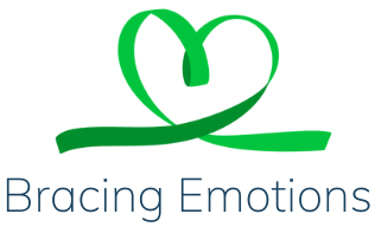We meet several people throughout our life. Eventually, we form relations with them; a few are circumstantial whereas others are deliberate. In the course of time, we lose touch with some people and on the other hand, there are people we hold onto our whole life. No matter the case, these relations and the experiences they bring; both pleasant and unpleasant are inevitable. For its 13th meet-up Bracing Emotions shed on this very topic - connection and an experience very close to it - loneliness.
On November 9 2025, Nida Shaikh, director of Manah Centre for Mental Well-being joined us. She began by asking the most vital question - what is the difference between being alone and being lonely? Answers from attendees suggested that being alone is physical solitude meanwhile being lonely means to feel disconnected with or without people. Loneliness is more of a mental state. The speaker disclosed that the COVID pandemic has isolated people and thus is a major factor responsible for increasing loneliness. Earlier, people used to have an active social life going on through something as ordinary as running errands. But the lockdown shut people down in their homes and eventually they've lost touch with each other. We've lost connection.
But is it a big deal that we don't feel connected? If so, why is that? Ms. Shaikh asked these questions to dive deeper into the topic. All the answers - we need validation, we need support, we want acceptance - were pointing towards one ultimate answer that we humans are social animals! We need other people in order to survive. That is exactly why we crave connection. But many times, we struggle to connect with others which leads to feeling lonely.
Since feeling lonely was discussed previously, the speaker then elaborated on the types of loneliness. She listed down the following types of loneliness:
Mental loneliness: When your thoughts and ideas don't match with others.
Emotional loneliness: When your emotions and feelings are not matched.
Academic loneliness: When you don't match with anyone on an academic level.
Professional loneliness: When you don't have anyone working together with you.
Familial loneliness: When your ideas, thoughts, etc. don't match that of your family.
Romantic loneliness: Feeling lonely because of the absence of a romantic partner. Moreover, it also applies if you feel either type of loneliness mentioned above with your partner.
Spiritual loneliness: When you don't match with anyone during your healing journey.
These are a few types of loneliness related to different areas of life. To overcome loneliness we have to make and maintain connections with others. But what holds us back from that? Is it fear of rejection? Perhaps judgement? Or is it due to a misunderstanding? After a long deliberation, Ms. Shaikh revealed that it is the “shame” at the base of all these fears. Ironically, the more you feel shame, the lonelier you become and the lonelier you become, more the shame you feel. It's a vicious cycle! To break free from this cycle, we need to build connections with others. But what exactly does it mean to have a connection? Does every interaction we have be counted as a connection? Of course not. We have to match the nervous system of others to feel connected. Now what actually is that?
Since birth, our brain is learning everything by imitation. That's how we learn to speak, eat and other mannerisms. Similarly, when you imitate a person's nervous system, you get connected with them. It is called “co-regulating”. It is similar to the saying “being on the same page”. When you imitate someone’s excitement, they instantly feel connected with you. On the flip side, someone’s disinterested attitude can kill your excitement in a moment! This is nothing but a gap between two nervous systems. You can match someone’s nervous system simply by matching the speed of their breath.
The speaker gave an interesting example of this. If a panicked person with heaving breaths approaches you and you engage with them in a super calm manner, it will enrage them. You have to match their speed of breath to reciprocate their sense of urgency. That's only when they feel safe and connected with you.
Later, the speaker gave a three-fold formula of connection:
Mindfulness: You must be present in that moment and try to bring back your attention whenever it wavers.
Attunement: You have to tune in with the other person. In other words, find common grounds of connection.
Curiosity: Being genuinely curious about other people, trying to learn about them will help you build connections. Remember to be open-minded and non - judgemental
.
In this way, you will naturally regulate their nervous system and automatically yours too! That's how it works! The more you regulate others, the more you regulate yourself. However, it's important to draw a line between healthy co-regulation and people-pleasing.
In the final section, a round of queries was put forth. The gist was that loneliness, be it of any kind, is not healthy for us. To tackle loneliness and not spiral, we can seek out a friend and pour our heart out. Another way is to write down our thoughts to clear our mind. The speaker also asserted that we should embrace ourselves, our choices and our inner child and stand up for ourselves whenever necessary. Also, it is completely fine if you want to do things on your own, rather it's also a form of connection - a connection with yourself! So feel free to sit in a park by yourself indulging in what you like to do!
On this note, the session concluded.
Meetup 14th The Challenge of Loneliness and Art of Connection
9th November 2025
Connect
Join our community for mental health discussions.
Support
© 2024. All rights reserved.

